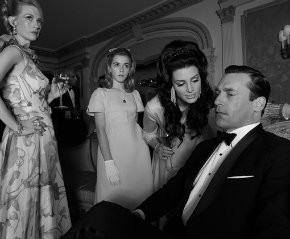Mad desires

A voyeuristic pleasure in historical flashbacks is part of what makes Mad Men compelling viewing. Set in the early 1960s, AMC’s Emmy-winning drama about an advertising firm shows a world very close to our own except for being more glamorous (the characters make midday drinking look sophisticated instead of desperate, and they wear linen suits to the birthday party of an eight-year-old).
And except, of course, for all the casual racism, sexism and classism. A new secretary at the firm is subjected to nonstop verbal harassment and a public pool is started to see who will be first to sleep with her; a housewife drinks and smokes her way through her pregnancy; a picnicking family shakes their litter onto the verdant grass and drives away. How sexist and ignorant and environmentally unsound, we say from the safety of our couches.
“When are things going to get back to normal?” wonders Roger Sterling (John Slattery), the jocular senior partner at Sterling Cooper Draper Pryce, the fictional advertising company. He is responding to the firm’s decision to hire its first African-American secretary in 1966. Given that viewers first met Roger five seasons earlier when he was trying to find a Jewish employee and pass him off as a junior creative agent to impress a Jewish client (“I had to go all the way to the mailroom,” Roger brags, “but I found one”), SCDP has come a long way. And we know that 1966 is just the tip of the iceberg when it comes to social and cultural revolutions.





